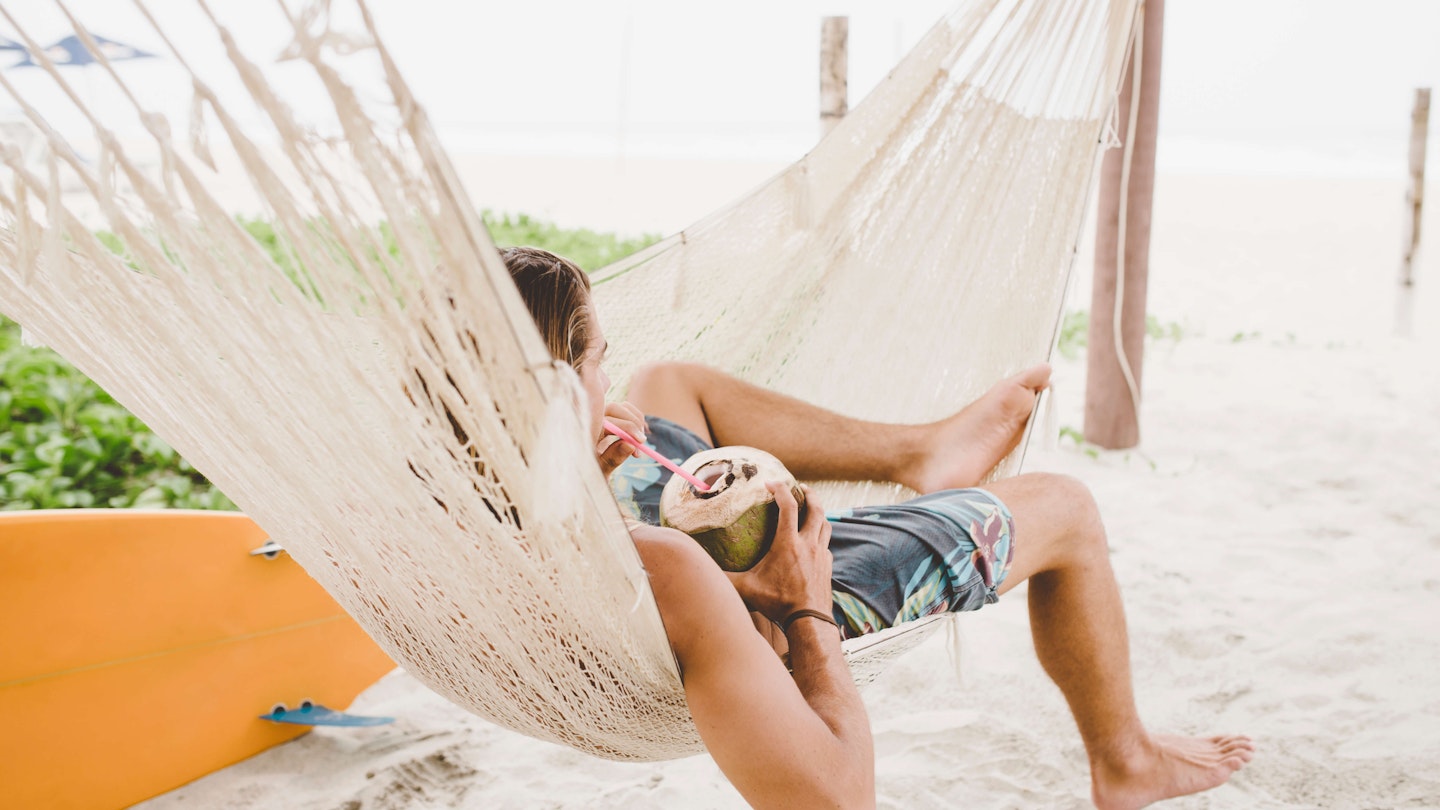Discover the Oaxaca Coast

The Oaxaca Coast is an independent traveler’s dream come true: a dramatic, near-empty shoreline with long golden beaches and lagoons full of wildlife, dotted with fishing villages, bohemian enclaves, surf towns, and mellow resorts.
The lush Sierra Madre del Sur mountains serve as a backdrop to the coast, acting as a buffer to everything (and everyone) else. Those who make the journey are rewarded with paradisiacal beaches, world-class surfing swells, and snorkeling from the shore, as well as nesting turtles and whale watching. The Oaxaca Coast’s famously laid-back vibe invites you to disconnect, slow down, and stay awhile.
When Should You Go to the Oaxaca Coast?
It’s hard to beat the weather on the Oaxaca Coast. The climate is temperate year-round, with daytime temperatures averaging 27°C (80°F) and evenings rarely dropping below 21°C (70°F). The ocean water, too, hovers in the mid-20s.
There are just two seasons. From November to April, the dry season brings blue skies, windy days, and virtually no clouds. Whale watching is best from December to March. Between May and October, the rainy season introduces afternoon and early evening showers, although they are typically short-lived.
Is it Easy to Get to and Around the Oaxaca Coast?
Reaching the Oaxaca Coast can be challenging due to the rugged Sierra Madre del Sur mountains, with only two highways in and out. The easiest but most expensive way to arrive is by air via Bahías de Huatulco International Airport, which has direct flights from several cities. Puerto Escondido’s airport primarily handles flights from Mexico City.
By land, expect a journey of six to seven hours in a rental car from Oaxaca City, or eight to nine hours via an often-packed camioneta (passenger minivan). Buses provide a more comfortable experience, offering reclining seats, WiFi, and bathrooms on board.
Why Should You Visit the Oaxaca Coast?
The Oaxaca Coast is unique in Mexico – characterized by small beach towns and fishing villages featuring a laid-back, bohemian vibe that attracts backpackers and surfers. The coastline boasts miles of stunning beaches, complete with dolphins, turtles, and migrating whales.
Bahías de Huatulco is one of the easiest sections of the Oaxaca Coast to explore, offering healthy reefs and calm turquoise waters ideal for snorkeling. Don’t miss Parque Nacional Huatulco, known for its beautiful beaches like Bahía Maguey and Bahía Cacaluta.
My Favorite Thing to Do on the Oaxaca Coast
Witnessing an arribada on Playa Escobilla is a must. This remarkable event occurs around the full moon from July to January when thousands of olive ridley turtles return to nest on the beach, creating an unforgettable sight.
Is the Oaxaca Coast Safe?
The Oaxaca Coast is a generally safe travel destination. However, like many places in the world, petty thefts can happen, so it’s wise to carry only what you need and secure valuables. Avoid wandering alone at night and be aware of your surroundings.
How Many Days Should You Plan on Staying?
Plan on at least four days on the Oaxaca Coast to truly relax and enjoy the beaches. For additional activities like surfing and snorkeling, a week is ideal.
What Should You Wear?
Pack light for a beach vacation: flip-flops, swimsuits, casual street clothes, and possibly a light sweater for breezy nights. Don’t forget a raincoat or umbrella if you’re visiting during the rainy season.
How Much Money Do You Need for the Oaxaca Coast?
The Oaxaca Coast is an affordable beach destination compared to others in Mexico. While prices can be lower, it’s essential to be mindful of the local infrastructure.
Can You Use Your Credit Card?
Cash is king on the Oaxaca Coast, as many businesses—especially in villages—do not accept cards. It’s recommended to carry cash for day-to-day purchases.
Should You Bring Your ATM Card?
ATM cards are useful. However, take larger sums of cash out at the airport or larger towns as ATMs in smaller villages may be scarce or empty.
Daily Costs
- Hostel (dorm bed): M$200–300
- Basic room for two: from M$700
- Self-catering apartment (including Airbnb): from M$1000
- Taxi (in town): M$30–50
- Pasajero ride: M$7–15
- Liter of bottled water: M$14
- Beer on the beach: M$20
- Street taco: M$9
- Dinner for two: M$200–450
- Surfboard rental (per hour): M$100
- Drop-in yoga class: M$60





